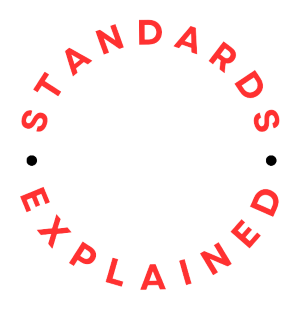ISO 44001:2017 Collaborative business relationship management systems — Requirements and framework is the international standard that provides a framework for establishing, implementing, maintaining, and continually improving collaborative business relationships. It specifies requirements for the effective identification, development, and management of collaborative business relationships within or between organizations.
Who should use the standard?
ISO 44001 is applicable to private and public organizations of all sizes, from large multinational corporations and government organizations, to non-profit organizations and micro/small businesses. It can be applied on several different levels, for example:
- a single application (including operating unit, operating division, single project or programme, mergers and acquisitions);
- an individual relationship (including one-to-one relationships, alliance, partnership, business customers, joint venture);
- multiple identified relationships (including multiple partner alliances, consortia, joint ventures, networks, extended enterprise arrangements and end-to-end supply chains);
- full application organization-wide for all identified relationship types.
What does it cover?
| Introduction |
| 1 Scope |
| 2 Normative references |
| 3 Terms and definitions |
| 4 Context of the organization |
| 4.1 Understanding the organization and its context |
| 4.2 Understanding the needs and expectations of stakeholders |
| 4.3 Determining the scope of the collaborative business relationship management system |
| 4.4 Collaborative business relationship management system |
| 4.5 Creation of value |
| 5 Leadership |
| 5.1 Leadership and commitment |
| 5.2 Policy |
| 5.3 Organization roles, responsibilities and authorities |
| 6 Planning |
| 6.1 Actions to address risks and opportunities |
| 6.2 Collaborative business relationship objectives and planning to achieve them |
| 6.3 Identification and prioritization of collaborative business relationships |
| 7 Support |
| 7.1 Resources |
| 7.2 Competence and behaviour |
| 7.3 Awareness |
| 7.4 Communication |
| 7.5 Documented information |
| 8 Operation |
| 8.1 Operational planning and control |
| 8.2 Operational awareness (Stage 1) |
| 8.3 Knowledge (Stage 2) |
| 8.4 Internal assessment (Stage 3) |
| 8.5 Partner selection (Stage 4) |
| 8.6 Working together (Stage 5) |
| 8.7 Value creation (Stage 6) |
| 8.8 Staying together (Stage 7) |
| 8.9 Exit strategy activation (Stage 8) |
| 9 Performance evaluation |
| 9.1 Monitoring, measurement, analysis and evaluation |
| 9.2 Internal audit |
| 9.3 Management review |
| 10 Improvement |
| 10.1 Nonconformity and corrective action |
| 10.2 Continual improvement |
| Annex A Assessment checklist |
| Annex B Relationship management plan |
| Annex C Competencies and collaborative behaviour |
| Annex D Relationship maturity matrix |
| Annex E Exit strategy |
| E.1 Overview |
| E.2 Operational awareness |
| E.3 Knowledge |
| E.4 Internal assessment |
| E.5 Partner selection |
| E.6 Working together |
| E.7 Value creation |
| E.8 Staying together |
| E.9 Exit strategy activation |
| Annex F Description of business relationship types |
| Annex G Application guidance |
| G.1 General |
| G.2 Common themes of relationship management |
| G.3 Planning |
| G.4 Competence and behaviour |
| G.5 Lifecycle framework |
Implementing ISO 44001
Implementing a collaborative business relationship management system in an organization in conformity with ISO 44001 involves several key steps.
Leadership and Commitment
- Obtain leadership commitment and support for the implementation of the collaborative business relationship management system.
- Establish a clear policy and objectives for collaborative business relationships.
Scope and Context
- Define the scope of the collaborative business relationship management system, including the boundaries and applicability.
- Understand the external and internal context of the organization and how it can affect collaborative business relationships.
Stakeholder Engagement
Identify and engage relevant stakeholders, considering their needs and expectations in relation to collaborative business relationships.
Collaborative Business Relationship Management System Planning
Develop a detailed plan for implementing the collaborative business relationship management system, considering resources, roles, responsibilities, and timelines.
Risk Assessment
- Conduct a risk assessment to identify and assess potential risks and opportunities in collaborative business relationships.
- Develop strategies to address and mitigate identified risks and capitalize on opportunities.
Collaborative Business Relationship Policy and Objectives
- Establish a collaborative business relationship policy that aligns with the organization’s objectives.
- Set measurable objectives that support the policy.
Organizational Structure, Roles, and Responsibilities
- Define the organizational structure for collaborative business relationship management.
- Allocate roles and responsibilities to ensure effective implementation and maintenance of the system.
Competence and Training
- Identify the competencies required for personnel involved in collaborative business relationships.
- Develop and implement training programs to ensure personnel have the necessary skills.
Communication
- Establish effective communication processes within the organization and with external stakeholders involved in collaborative business relationships.
- Ensure that relevant information is shared promptly and transparently.
Documentation and Information Management
- Develop and maintain documentation that supports the collaborative business relationship management system.
- Implement information management processes to ensure data integrity and accessibility.
Partner Selection and Evaluation
- Establish criteria for selecting collaborative business partners.
- Develop a process for evaluating and monitoring the performance of business partners.
Collaborative Agreement Development
- Develop clear and comprehensive collaborative agreements with business partners.
- Ensure that agreements address roles, responsibilities, expectations, and dispute resolution mechanisms.
Performance Evaluation
- Establish key performance indicators (KPIs) to measure the performance of collaborative business relationships.
- Monitor and evaluate performance against established KPIs.
Continual Improvement
- Implement processes for continual improvement of the collaborative business relationship management system.
- Conduct regular audits and reviews to identify opportunities for improvement.
Legal and Other Requirements
Identify and ensure compliance with relevant legal and other requirements related to collaborative business relationships.
Conflict Resolution
Establish a process for addressing and resolving conflicts that may arise in collaborative business relationships.
Documentation and Record Keeping
Establish processes for document control and record keeping to demonstrate compliance with ISO 44001 requirements.
External Audits and Certification
Prepare for and undergo external audits by certification bodies, if seeking ISO 44001 certification.
Some further words of advice…
Remember, the implementation of a collaborative business relationship management system is an ongoing process, and organizations should continuously monitor, evaluate, and improve their systems to ensure they remain effective and aligned with the organization’s collaborative business relationship objectives.
ISO 44001 can be purchased through the ISO.org website.














Comments (0)